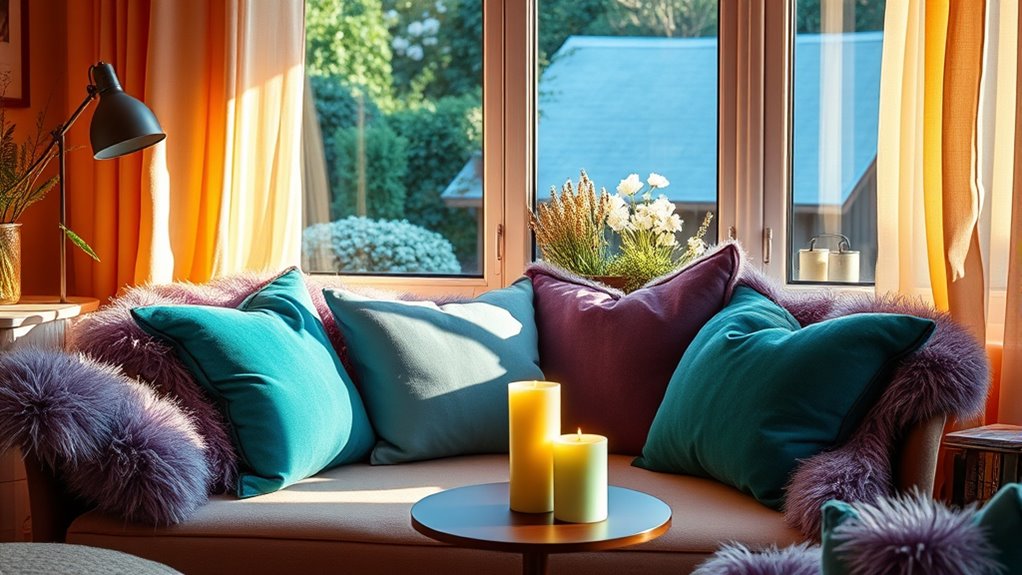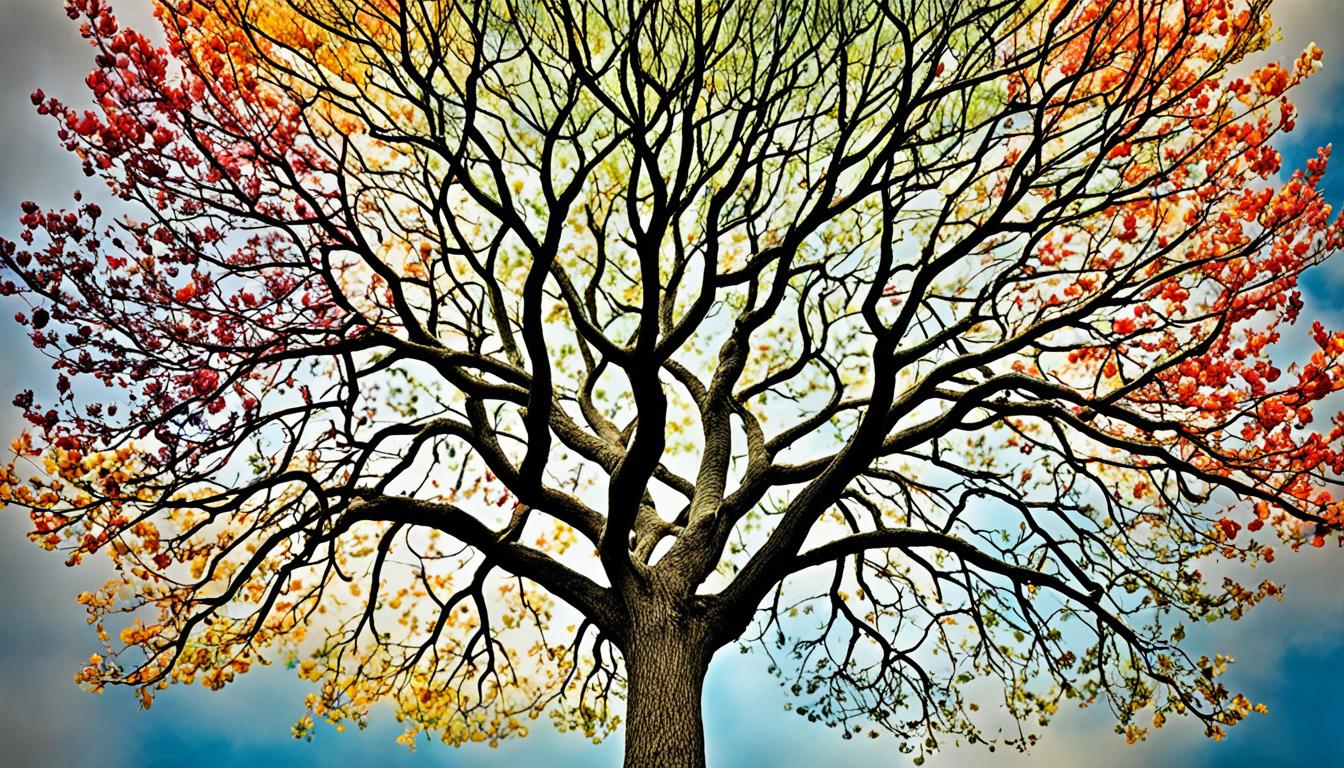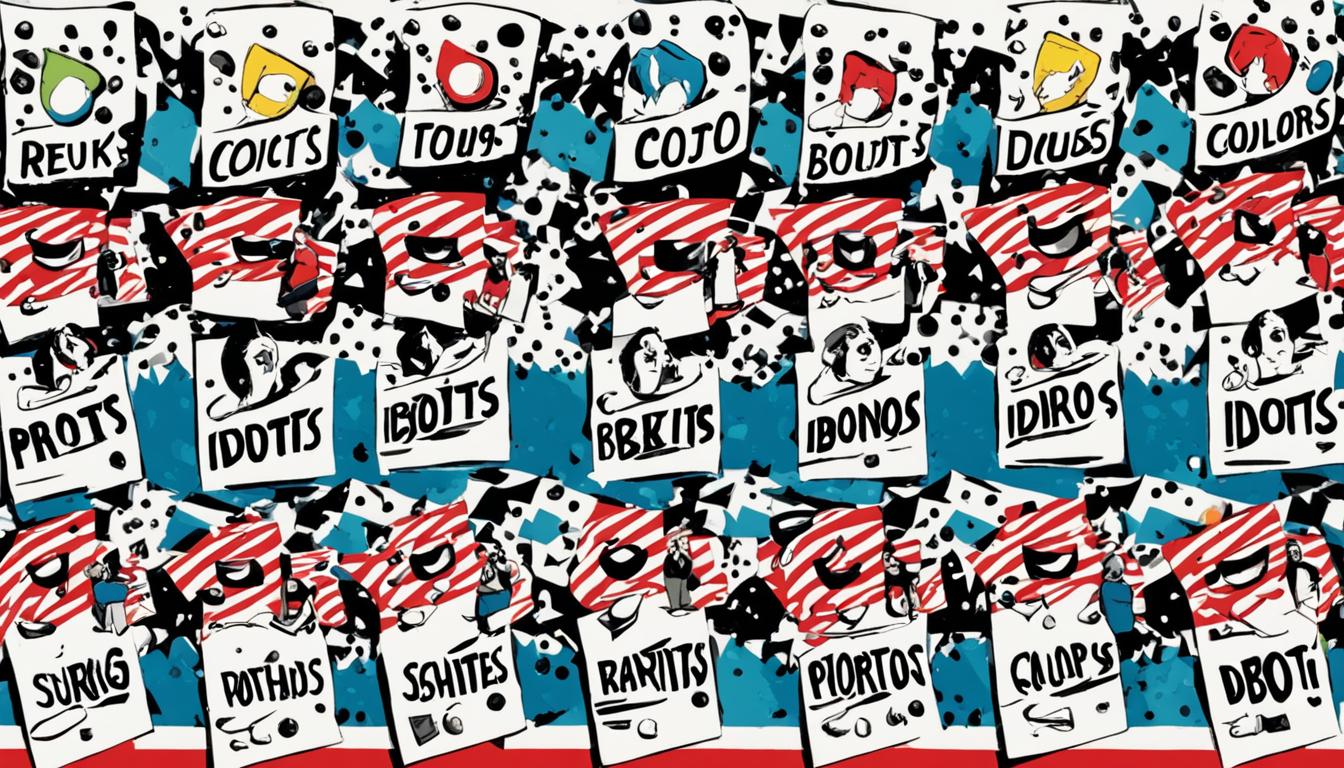Your color preferences reveal your personality and can influence your mood. Bright shades like red or orange boost excitement, while softer tones like blue or lavender promote relaxation. By choosing colors intentionally for your environment or wardrobe, you can manage your emotional well-being and create space that supports your mood. Understanding these connections helps you make smarter choices to feel more balanced and positive every day—continue to explore how color can shape your emotional life.
Key Takeaways
- Color preferences reveal personality traits such as enthusiasm, caution, or calmness, influencing mood regulation strategies.
- Bright colors like red and orange stimulate energy and excitement, while softer tones like blue and lavender promote relaxation.
- Using specific colors in environments can enhance emotional well-being and support mood management.
- Color therapy leverages intentional color choices to improve mental states and reduce stress.
- Awareness of how colors affect emotions empowers deliberate choices for mood regulation and psychological balance.

Colors do more than just catch your eye; they influence your mood and reveal aspects of your personality. You might notice how certain shades make you feel energized or calm, and this isn’t a coincidence. Our emotional responses to colors are deeply rooted in psychological impacts that shape how we experience the world. For example, bright reds can stimulate excitement and urgency, while soft blues promote relaxation and a sense of peace. Recognizing these effects allows you to harness color therapy—a practice that uses colors intentionally to influence your mental state and well-being. When you surround yourself with specific hues, you’re actively engaging in a subtle form of mood regulation, whether consciously or unconsciously.
Colors influence your mood and personality, shaping how you experience and respond to the world around you.
Your personal color preferences can tell you a lot about your personality traits. If you’re drawn to bold, vibrant colors like orange or yellow, you might be someone who is enthusiastic, outgoing, and optimistic. Conversely, if you favor darker, muted tones like navy or gray, it could suggest you’re more introspective, reserved, or cautious. These color choices aren’t just about aesthetics; they reflect your inner emotional landscape and tendencies. By understanding this, you can better manage your mood and create environments that support your mental health. For instance, if stress weighs you down, incorporating calming shades like lavender or sea green into your space can serve as a form of color therapy, helping you de-stress and restore balance. Additionally, understanding the psychological impacts of colors can help you make more intentional choices in your environment and wardrobe to enhance well-being.
The psychological impacts of colors extend beyond individual preferences—they can be strategically used to influence behaviors and emotional states. In workplaces, blue walls might promote focus and productivity, while in bedrooms, soft pinks can foster a sense of comfort and safety. You can use this knowledge to craft spaces that support your mood and enhance your daily life. This isn’t about changing your personality but about aligning your environment with your emotional needs. Whether you’re choosing paint colors, clothing, or accessories, being mindful of color psychology enables you to create a mood-enhancing environment. It’s a subtle but powerful way to take control of your emotional landscape through intentional color choices.
In essence, understanding the psychological impacts of colors and applying color therapy principles can help you regulate your mood more effectively. Your color preferences and surroundings aren’t just about style—they’re tools for emotional well-being. By paying attention to how different shades make you feel, you can craft a space and wardrobe that support your mental health, boost your confidence, and foster a positive outlook. Recognizing the influence of color on your personality and mood empowers you to make deliberate choices that contribute to a more balanced, vibrant life.
Frequently Asked Questions
How Do Cultural Differences Influence Color Preferences?
Cultural differences markedly influence your color preferences through cultural symbolism and color associations. In some cultures, red symbolizes luck and prosperity, making you more drawn to it, while in others, it may represent danger or warning. Your cultural background shapes how you interpret colors, affecting your emotional responses and choices. By understanding these cultural nuances, you can better grasp why certain colors resonate with you or others around you.
Can Color Therapy Replace Traditional Mood Management Techniques?
Color therapy can’t fully replace traditional mood management techniques because it relies on color symbolism and emotional responses that vary from person to person. While color therapy can complement your efforts and boost your mood, it shouldn’t be your sole approach. You need proven methods like therapy, exercise, or medication when necessary. Use color therapy as a helpful tool, but prioritize holistic strategies for effective mood regulation.
Which Colors Are Most Effective for Reducing Anxiety?
Did you know that calming colors like blue and green can reduce anxiety by up to 20%? These colors have a strong psychological impact, promoting relaxation and peace. Blue symbolizes trust and tranquility, while green represents balance and harmony. Incorporate these hues into your environment to harness their mood-regulating effects, helping you feel more centered and less stressed. Their powerful psychological impact makes them ideal choices for anxiety reduction.
How Does Lighting Affect the Perception of Color and Mood?
Lighting considerably influences how you perceive color and mood. When you use soft lighting with low intensity, it enhances warm color tones, creating a calming atmosphere. Conversely, bright, intense lighting with a higher color temperature makes colors appear sharper and more energetic, boosting alertness. Adjusting lighting intensity and color temperature helps you tailor your environment’s mood, making it easier to relax or energize yourself as needed.
Are There Any Risks Associated With Using Color for Mood Regulation?
Yes, there are risks with using color for mood regulation. Relying too heavily on color symbolism can lead to emotional imbalance if the chosen hues don’t match your true feelings or trigger unintended associations. For example, bright colors might energize you but also cause anxiety, while dull colors could deepen sadness. It’s essential to understand each color’s emotional impact and use them mindfully to avoid negatively affecting your mental well-being.
Conclusion
By exploring how colors influence your personality and mood, you realize that color choices can genuinely shape your emotional well-being. While some theories suggest specific colors evoke certain feelings, it is crucial to trust your own responses. You have the power to harness colors intentionally, creating an environment that supports your mood and personality. Ultimately, understanding this connection encourages you to embrace color as a tool for better emotional balance and self-awareness.
Felicity, our Author, pens in-depth articles and guides that delve into the heart of personal discovery. Her narrative-driven approach weaves together theory, practice, and personal anecdotes, making the journey of self-exploration both relatable and inspiring. Felicity’s contributions help illuminate the path for those seeking a deeper understanding of themselves and their relationships.









